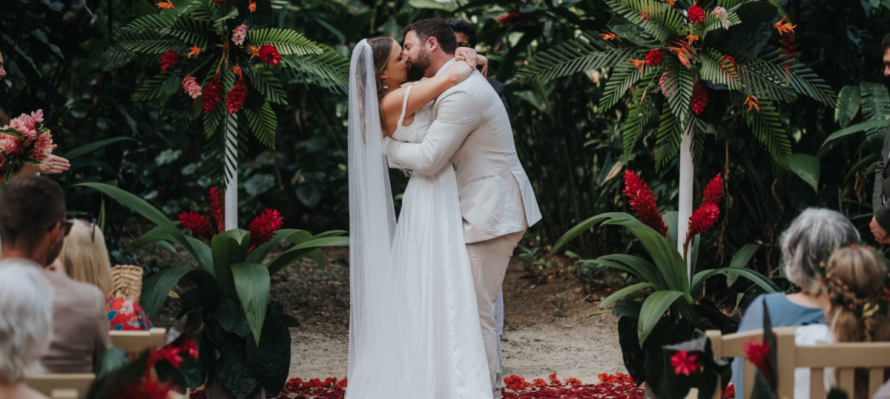After the excitement of the big proposal and announcing your engagement, you will need to broach the subject of who is going to pay for the wedding. Hopefully your families will make it easy on you and will let you know how much they are willing to contribute, or will offer to pay for certain aspects of the big day.
Traditionally it was the bride’s parents that made the largest contribution to the wedding bill, but today many couples are financing the wedding themselves. The 2013 Easy Weddings Australian Weddings Survey found that 47.6% of couples are sharing the wedding costs with their parents, while 42.5% of couples were paying for the wedding by themselves.
You probably know your family’s financial situation well enough to get an idea of who will pay for the wedding
Here are the traditional elements that each family pay for to give you a head start:
Who pays for the wedding outfits?
Traditionally, the bride or her family usually pays for the bridal gown along with accessories, hair, make up, and any beauty treatments. They also pay for flower girl’s outfits. The groom or his family is expected to pay for his wedding outfit and those of any page boys. Adult bridesmaids and groomsmen usually pay for their own wedding outfits.
Who pays for the wedding ceremony?
It’s tradition for the bride’s family to pay for the ceremony venue, while the groom would pay for the celebrant and the marriage license. However, some families are now following the general rule that the groom’s family pays for the entire ceremony, including the rehearsal, and the bride’s family pays for the reception. The bride should buy the groom’s wedding ring and the groom should buy the bride’s.
Who pays for the wedding flowers?
In general the groom’s family pay for the wedding flowers; especially the bride’s and bridesmaids’ bouquets. They also pay for the button holes for the male members of the wedding party and the ceremony flower arrangements. The bride’s family tends to pay for the flowers used to decorate the reception venue, including the table centrepieces. If you use the same arrangements for the ceremony and reception, the bride’s family usually pays for them.
Who pays for the wedding stationery and photographs?
Traditionally the bride’s family will pay for the invitations and thank you cards, and will also be the ones to send them out. They will also pay for place names, escort cards, and seating plans for the reception. The bride’s family usually pays the photographer and the videographer, but if the bride and groom want extras that aren’t included in the standard package they should pay for those themselves.
Who pays for the wedding reception?
The wedding reception can be a big expense for the bride’s family as they are traditionally expected to pay for the hire of the venue, the catering, a certain number of drinks, the cake, and any wedding entertainment.
Who pays for the thank you gifts?
The bride and groom should pay for thank you gifts for their Maid of Honour, best man and any other attendants, as well as for their parents. The groom should be responsible for the gifts for his parents and the male members of the bridal party, and the bride should make sure she gets gifts for her parents and for her bridesmaids. They should also pay for the bombonieres as these are gifts to their guests to thank them for sharing their special day.
Who pays for accommodation and transportation?
Traditionally the groom should book and pay for the wedding car, as well as accommodation on the night of the wedding if necessary. The groom or his family should also book and pay for the honeymoon. Here’s an article on a groom’s role in wedding planning.
Remember, times have changed and though traditions vary from country to country, these days many couples split the cost 50/50 with the parents.
Are you planning your wedding? You can find a great range of quality wedding suppliers here.




